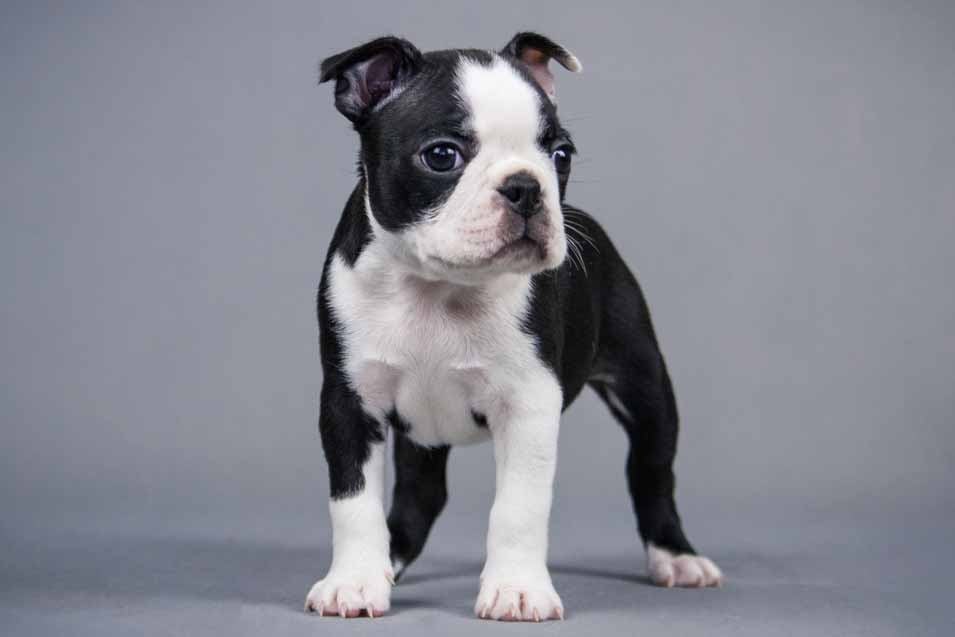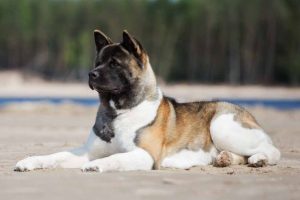As with human beings; sometimes complications occur with dogs when giving birth, making a caesarean section necessary. Though most dog breeds do deliver their puppies naturally and without any issues, some dog types are predisposed to requiring c-sections. With most of these breeds, the need for a c-section is the result of that particular dog type’s conformation (or build) which makes it difficult or impossible for the dog to organically push their babies out through the uterus. Some breeds are known for encountering unique challenges during the birthing process, and thus, their owners opt to have their veterinarians perform scheduled caesarean sections to prevent the possibility of a life-threatening problem from arising. What are some purebred dogs that are commonly born by caesarean section?
What Are Some of the Most Common Reasons Dogs Require C-sections?
Though some breeds typically do require c-sections as their unique body type does not support natural birth well, some breeds that can whelp their puppies naturally encounter problems that make a caesarean section necessary. There can be several different reasons why a caesarean section may be preferable for that particular dog at that particular moment. These include:
- Undeliverable puppies
At times, a puppy may be too large or positioned incorrectly for the mother dog to safely push it from her uterus. The longer the mother attempts to move the puppy along the birth canal, the greater the risk the other puppies in the uterine horn may die. However, positioning or size of a puppy is not always to blame when a c-section is required. Other reasons why puppies may not be able to be whelped naturally include small pelvic size in the mother dog or a deceased puppy.
- Uterine inertia
At times, a mother dog will experience contractions that are ineffective. When a mother labors over a lengthy period of time, she can become fatigued and unable to continue pushing. Puppies that remain in the birth canal for lengthy periods of time without any progress towards being delivered can become distressed, putting their lives in danger. Typically, a breeder will notice signs a mother is experiencing uterine inertia and that the best course of action is to proceed to a caesarean section. These can include black, red, or green discharge, or a period of Stage 2 labor (active pushing) for greater than four hours that does not result in a pup.
- Puppies past their due date
A mother dog should deliver her puppies precisely 63 days from the date of ovulation. If an owner has not done progesterone testing, this can be difficult to accurately predict, but counting from the date of the breeding pair’s first effective mating can give an approximate baseline measurement. Anything that goes beyond 63 days without any signs of impending birth is dangerous for a mother dog and her puppies. In these cases, a veterinary examination is necessary, and often, a c-section will be required to avoid the loss of the litter.
Which Dog Breeds Most Commonly Need Caesarean Sections?
There are several different dog breeds that most commonly require caesarean sections to safely deliver their babies.
Here is our list of the top eight dog breeds that often need a c-section to safely deliver their puppies:
- Norwich Terrier
The charming little Norwich Terrier is a happy go lucky pooch, full of sass and fun. The Norwich Terrier is prone to a number of reproductive concerns, making caesarean sections the most common choice of most breeders of this delightful breed. Norwich Terriers can be prone to both uterine inertia and resorption of litters during their pregnancy. Due to their small pelvic size, moving a puppy safely through the uterus can be difficult if not impossible for this pint-sized pooch. To ensure a safe delivery of healthy babies, this breed most commonly undergoes scheduled c-sections.
- English Bulldog
The distinctive English Bulldog is a pooch that is well-renowned for its impressive drooping jowls and comical ways. The breed is easily identified by its large head, a feature that contributes to the need for caesarean sections in their puppies.
English Bulldogs can be predisposed to carrying large litters. When a mother dog labors for lengthy periods of time, she can become prone to exhaustion. This can quickly lead to uterine inertia which can cause a mother dog to lose any remaining puppies yet to be born.
Because the size of the puppies’ heads may be larger than the mother’s pelvis, a natural birth is most often not possible.
- Bull Terrier
The Bull Terrier is often described as a clown hidden in the costume of a dog. A bit of a bull in a china shop, this breed’s tendency to get into trouble is part of its charm. Unfortunately, the Bull Terrier can suffer from a number of problems that make whelping their puppies naturally difficult if not impossible.
Because of the Bull Terrier’s facial shape, the puppies often have difficulty safely passing through the birth canal. In addition to their large, odd-shaped heads, their chests are quite substantial in size, making the potential for getting stuck in the uterus far greater than for other breeds.
On occasion, Bull Terriers will experience an unusual and dramatic temperature change that puts both the mother and puppies at risk, necessitating an immediate c-section. Other problems that can befall Bull Terriers include uterine inertia and dystocia (stalled birth due to malformed or stuck puppies or a dead fetus).
Bull Terriers often make very poor mothers and require constant supervision to prevent harm from coming to their young.
- Saint Bernard
The Saint Bernard is a gentle soul, renowned for its soulful looks and legendary stories of heroism. This breed possesses both large heads and large chests, making puppies of this breed difficult for a mother dog to deliver naturally. If allowed to attempt to whelp their puppies on their own, many Saint Bernard mother dogs will succumb to uterine inertia and require an emergency c-section.
Physical blockages can occur due to the size of the puppies or their positioning in the birth canal. In addition to this, Saint Bernards typically have large litters which can lead to stalled births from extreme fatigue in the mother dog.
- German Wirehaired Pointer
The German Wirehaired Pointer is one of few breeds that typically undergoes caesarean sections for elective reasons. The breed can whelp its puppies naturally; however, many breeders believe that allowing their dogs to free whelp will diminish their natural hunting instincts.
German Wirehaired Pointers can also be predisposed to hip dysplasia, a condition that can negatively impact a female dog’s ability to successfully whelp her puppies. The breed also often has very large litters which can lead to physical exhaustion, necessitating a c-section for a safe delivery of the remaining puppies.
- Pekingese
The noble Pekingese is a brachycephalic breed that shares some of the same physical characteristics of the bulldog and terrier on this list. Because the Pekingese has an exceptionally large head, the puppies are often too large to safely pass through the mother’s pelvis. Their bodies are also shaped in such a manner as to be prone to causing physical blockages.
Pekingese bitches are prone to suffering from eclampsia, a life threatening condition sometimes referred to as milk fever. Eclampsia requires immediate veterinary attention as it can lead to the death of the mother dog rapidly. Mothers experiencing signs of eclampsia during whelping should be taken in for an emergency c-section.
- Mastiff
As with other breeds on this list that possess large heads, the Mastiff’s physical conformation makes it difficult for this dog type to whelp its puppies naturally. Mastiffs are renowned for large litter sizes, meaning uterine inertia is often a problem with mother dogs.
The Mastiff also possesses an unusually large birth canal, meaning puppies must be pushed out a long distance to be born. If a complication were to occur during delivery, chances of a puppy dying in utero or the mother losing her life are far greater. As a result, Mastiffs most typically have scheduled c-sections.
- Boston Terrier
The Boston Terrier is a charming little pooch with its tuxedo like coat and large, puppy dog eyes. The Boston Terrier is a small dog that possesses a large head which can often be problematic for mother dogs attempting to deliver their pups naturally as it can easily lead to a physical blockage that stalls the birthing process.
Boston Terriers are predisposed to a medical condition known as anasarca. Dogs suffering from this may produce water puppies. Water puppies are born resembling a walrus from excess fluid absorption in the womb. As a result, the body of the puppy swells, and the pup is delivered stillborn. Water puppies can create a blockage, preventing other healthy and viable puppies from being born.
This breed is also known to suffer from uterine inertia.
Ever wonder which breeds are most prone to needing caesarean sections? Check out our list of the top eight breeds that typically deliver their puppies via c-sections to learn more.






